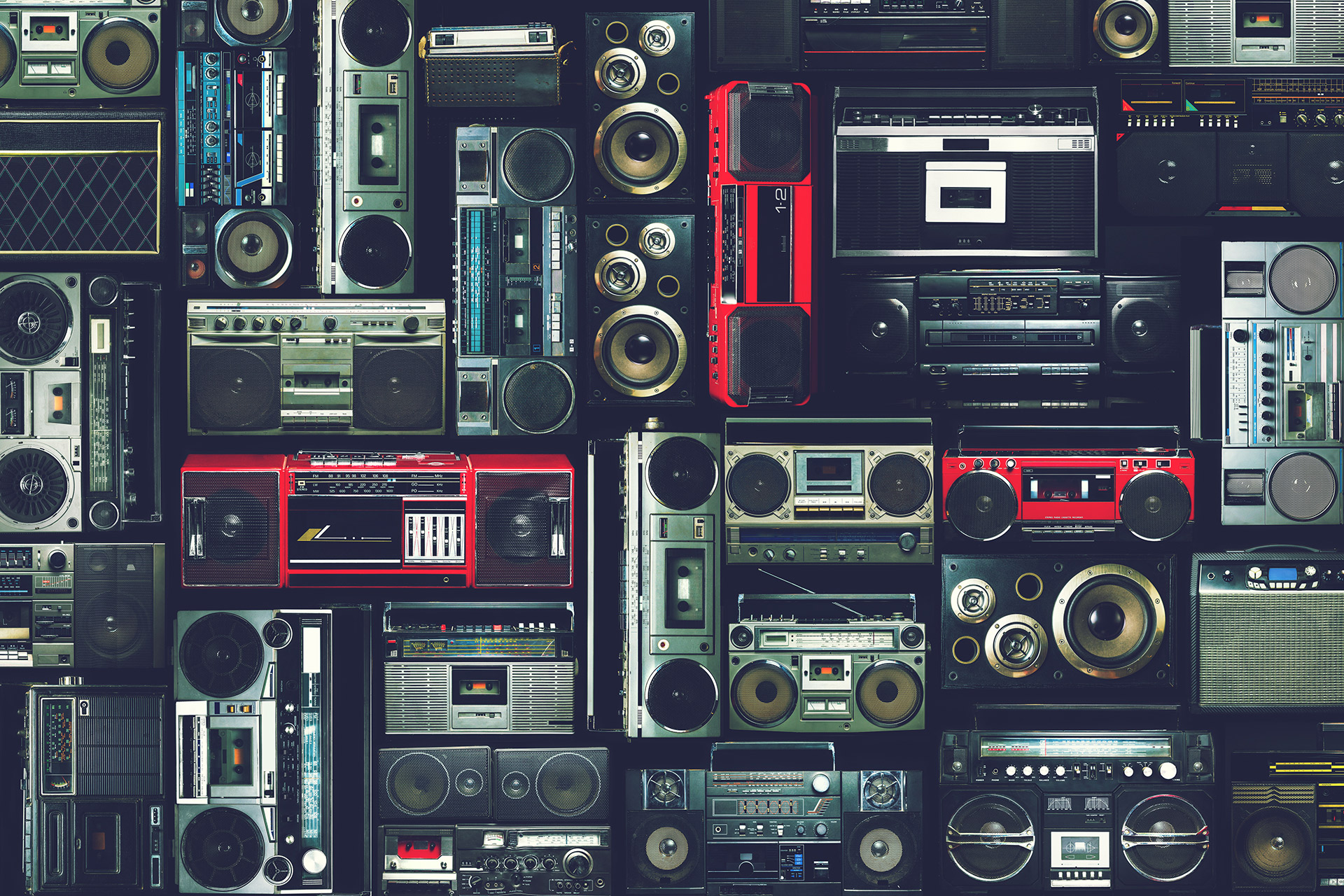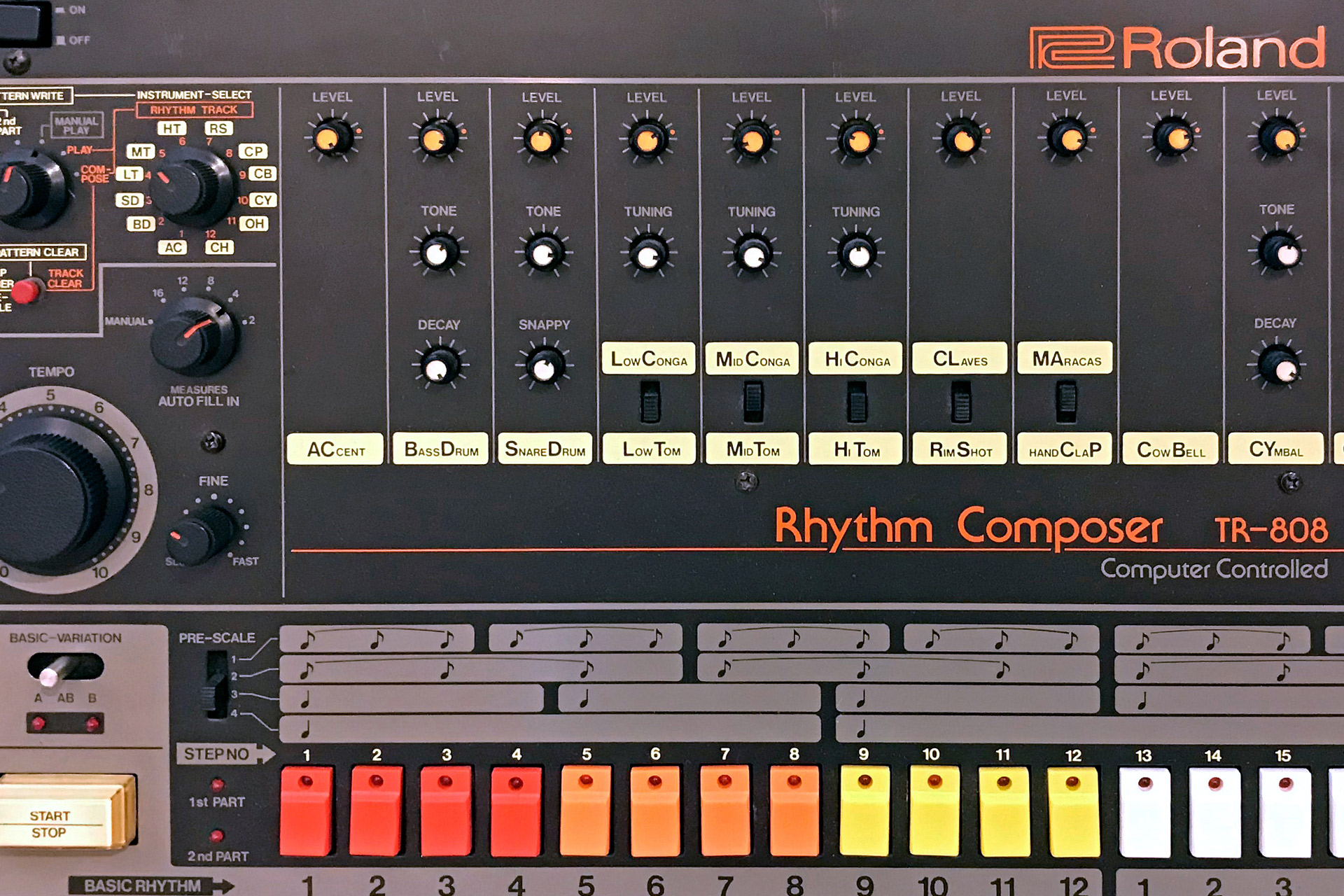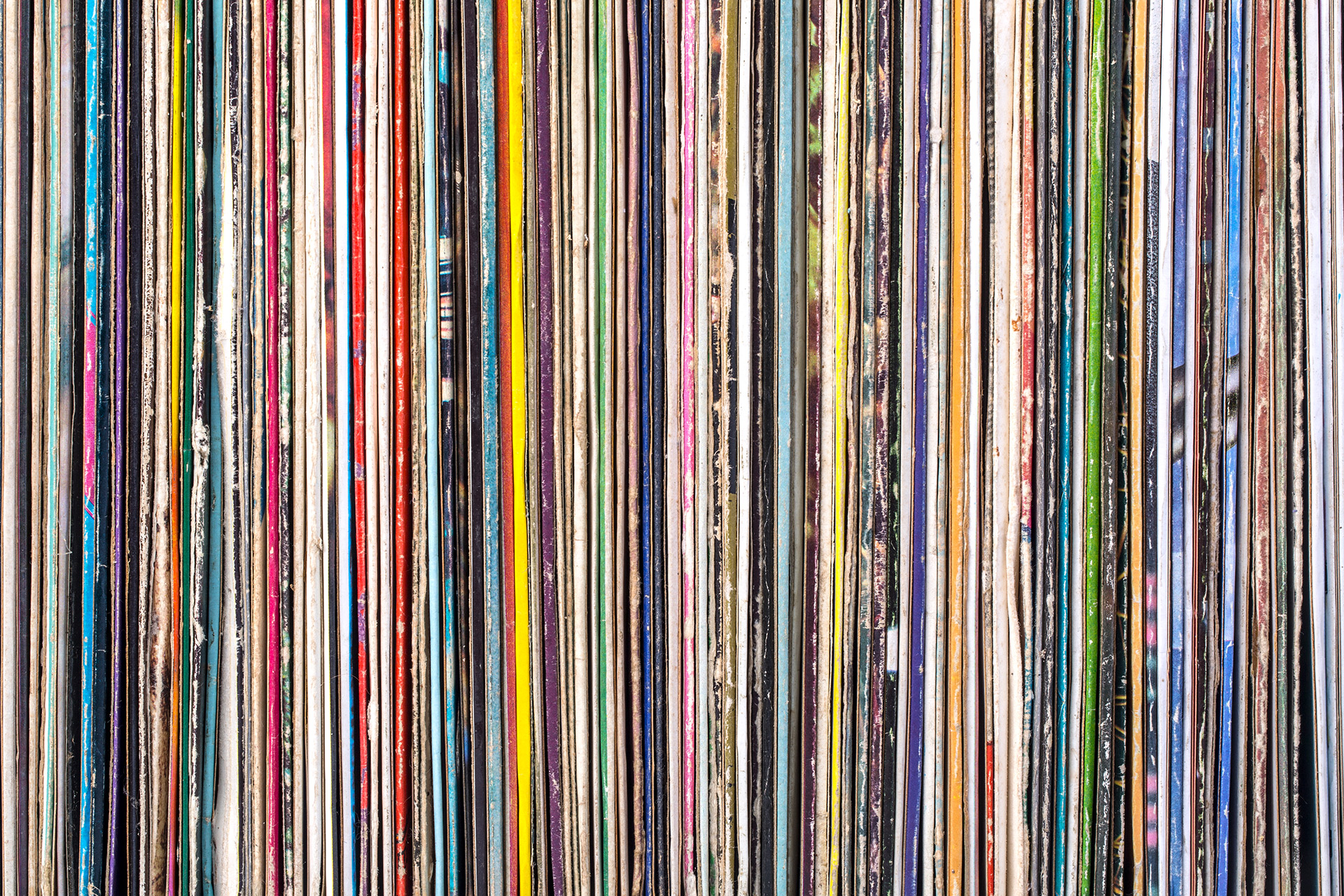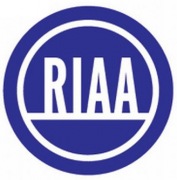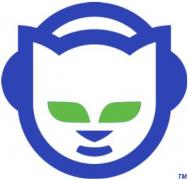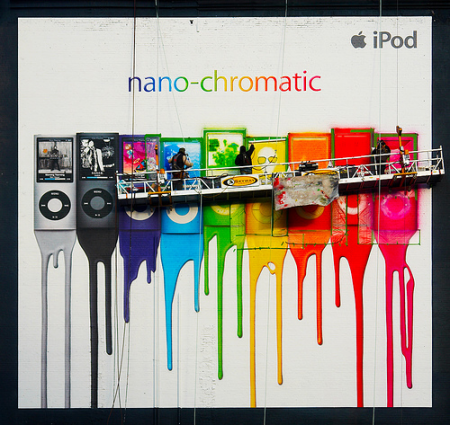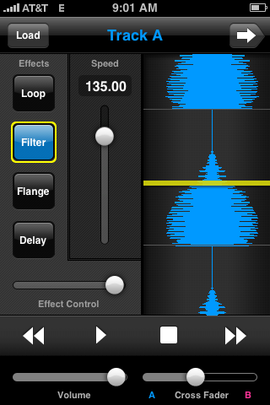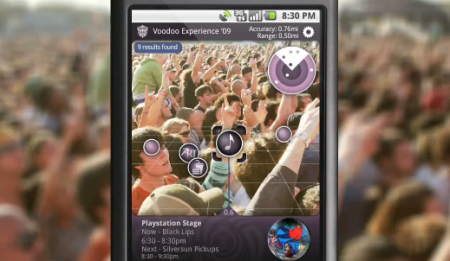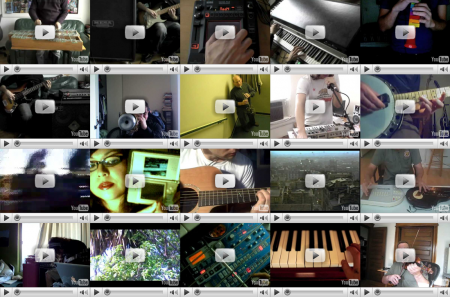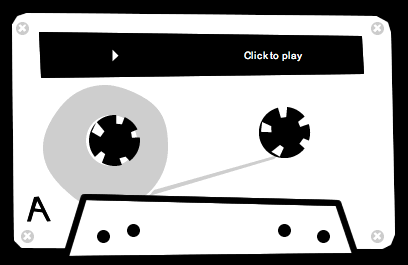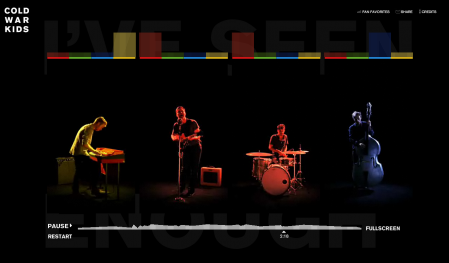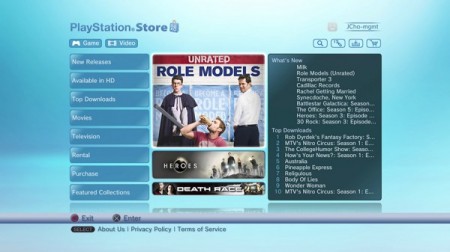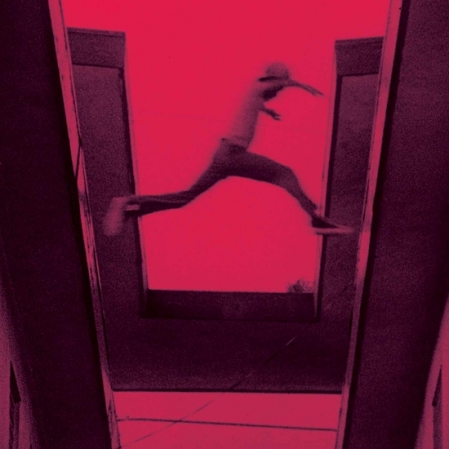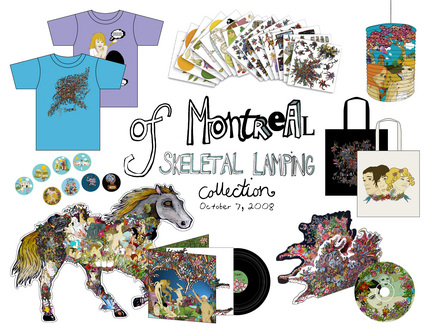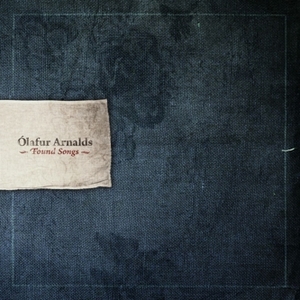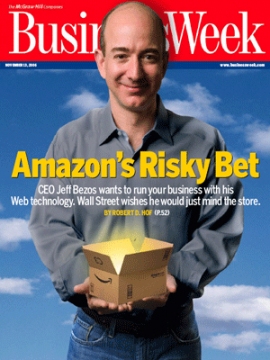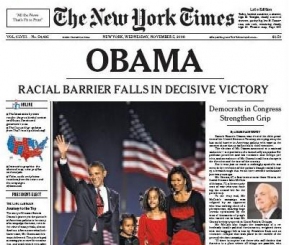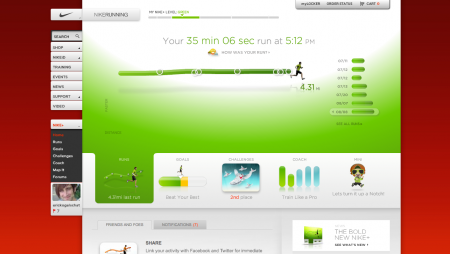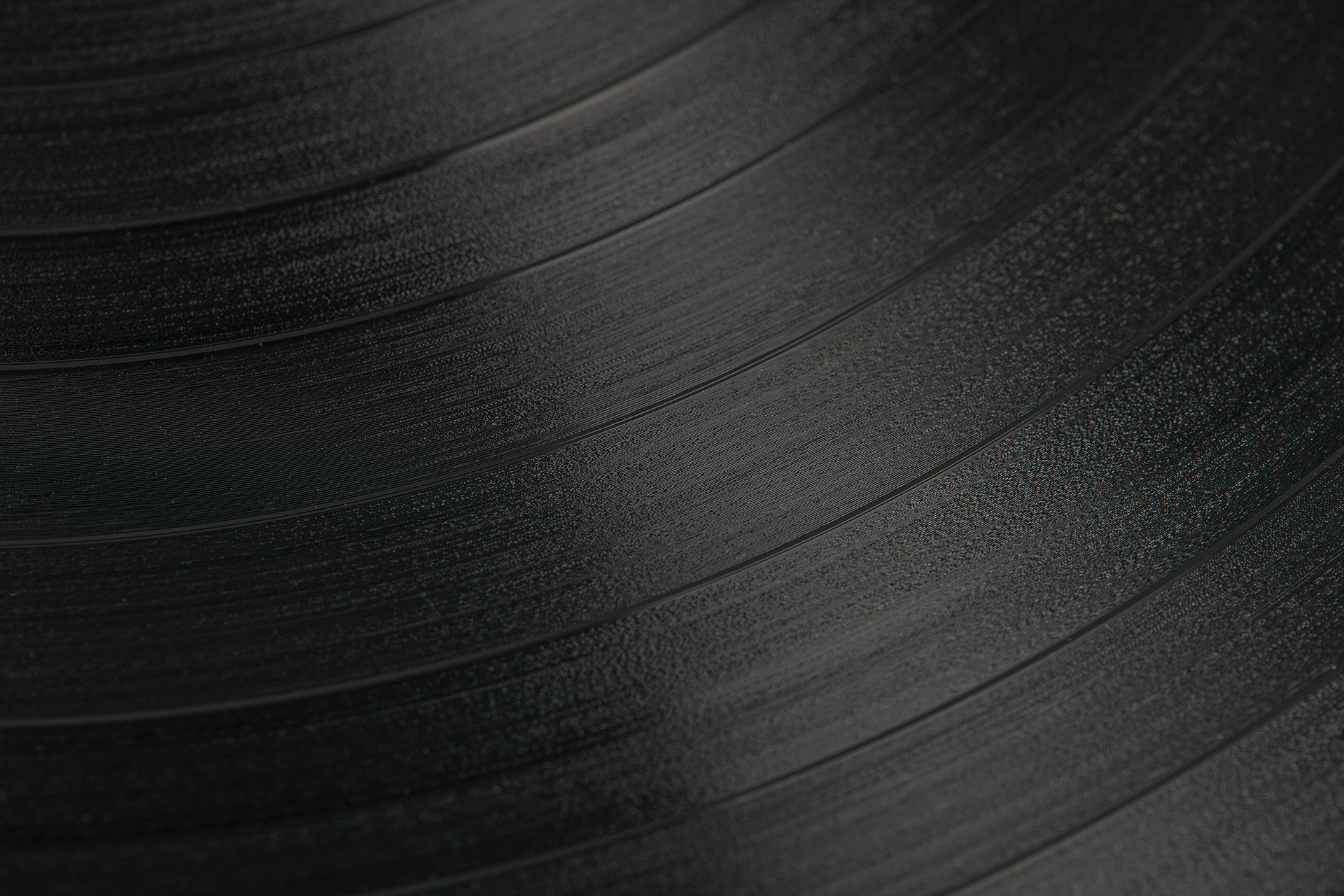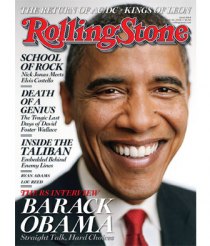The Mashup Class
It was Richard Florida - author, professor and researcher, that coined the phrase "The Creative Class." A concept that identifies the essential elements required for urban revitalization: Technology, Talent and Tolerance - The three Ts.
Cities must invest in technology, nurture talent and be tolerant or accepting of diversity for creative people to come live, work and play. The growth and prosperity of a city is dependent on these attributes because they attract a unique group of people – The Creative Class. This concept fascinated me for the past six or seven years, it occupied many of my thoughts and influenced many of my actions during a time when I moved from Detroit to Boston to Cleveland.
Another concept that I've been following for the past few years is The Creator Class. Another set of three words enriched with alliteration: Creators, Communities and Companies - The three Cs. This concept was devised by Piers Fawkes of PSFK, it analyzes the intersection of these areas and how they affect culture.
Members of this community leverage digital distribution, thrive in niches, market via networking and collaborate. I found this concept particularly interesting when looking at the world of advertising, due to the creation of new agencies like Victors & Spoils, co: and Made by Many, and also open innovation groups like The PurpleList or Behance Network. However, it was another kind of Creator that attracted my attention and ignited my curiosity over the past few years: The mashup artist. People like Banksy, Poster Boy and Girl Talk, who blurred the lines of creation by mashing original and borrowed works to a point where the originator was indistinguishable and remixed everything, even culture.
I am anxious for more artists to use multidisciplinary tools and harness the power of technology to remix our world and mashup production, consumption and distribution. And it's happening now, you are the artist and consumer.
Press Pause Play
Press Pause Play is a documentary that introduces the creatives at the frontier of production, the technical enablers of collaboration and distribution, the artists, the pop stars, the film makers, the business men, the visionaries and the ones left behind. Itʼs a story from the smallest molecule to the largest corporation. Itʼs a snapshot of today, but at the same time predictions of a near future.
A new generation of global creators and artists are emerging, equipped with other points of reference and tools. The teachers are not certified schools anymore - itʼs web sites, discussion forums and a “learn by doing”-mentality. We see the children of a digital age, unspoiled or uneducated depending on who you ask. Collaboration over hierarchy, digital over analog - a change in the way we produce, distribute and consume creative works. Press Pause Play is an amazing documentary that will inspire any creator or mashup artist.
Collaborate and Remix Life
Walking on Eggshells: Borrowing Culture in the Remix Age is a documentary about appropriation, creative influence, re-use and intellectual property in the remix age. It is a conversation among various musicians, visual artists, writers and lawyers.
Remix Everything
Remixing utilizes the techniques of copying, transformation and combining; with all creations infused with inspiration from another work. Everything is a Remix is a four-party documentary. At this moment, only three have been published:
The Future of Art & Ideas
This video from the New York Public Library features Larry Lessig, founder of Creative Commons and author of "Remix," Shepard Fairey, artist and founder of OBEY, and Steven Johnson, author of "The Invention of Air." This panel answers the question, "what is the future for art and ideas in an age when practically anything can be copied, pasted, downloaded, sampled, and re-imagined?"
The Mashup Class
After researching all of the sources above as well as many other reference materials, several key elements or trends were revealed. The idea that a breed of individuals exist that thrive in remixing and mashing up culture - The Mashup Class. And this is not limited to street art or music, it extends to the arts, business, technology and beyond. This culture has innate motivations and identifiable behaviors:
- Collaboration - Many people think that mash-up art is created by stealing, but it is actually the greatest collaboration between artist and the beholder. Collaboration is an action where creative inspiration adapts and evolves to create something new.
- Community - This is naturally created during collaboration, but also when the creator pays homage to those that inspired them
- Culture - Inherent in this practice is the association to pop-culture and act of borrowing cultural references as need to inspire or express. Cultural and historical references are your canvass and influencers are your inspiration and instruments. Crowdsource - Inspiration is not pulled from one, but many sources. Crowdsourcing is not always a visible action, but can be covert
- Openess - Transparency is not necessary, everything can be reverse engineered, whether purposely made available or not
- Defiance - In order to be innovative and creative, you must, at times, break the rules. And also, be willing to pay for the consequences
- Transform - According to copyright laws, the extent to which a work is deemed transformative will determine if the work is fair use. However, the expression and interpretation of art is native to the individual, the means by which language is translated or transformed from one to another. Originality is not a goal, plagiarism is not a fear, and authorship becomes unknown as the line between author and orignator is blurred.
- Instrumental - Technology has created an endless number of new tools and instruments for artists to use.
- Craft - Often the craft is learned through the process and individuals are self-made. Just as experise in the craft increases over time, so does respect for the craft
- Share - The old distribution model is dead, sharing works digitally is the new methodology for exposing others to your works
- Create - Be prolific and continue to remix and be creative
Intentionally Passive Music Composition
Intentionally passive music composition has interested me for quite some time. This is the idea that we can create music by strategically planning for specific outcomes to create beautiful music; such as harnessing gravity, nature or the elements to create music organically.
One of my favorite recent examples of this is Conductor, which harnesses the NYC subway system and turns it into an interactive string instrument. Using the MTA's actual subway schedule, the piece begins in real-time by spawning trains which departed in the last minute, then continues accelerating through a 24 hour loop.
Read more about music composition in the digital age here.
A Digital Rolling Stone 3.0 - Composition in the Digital Age
Inspired Creation
In this installment of A Digital Rolling Stone, we analyze the composition and creation of music in the digital age. If you are a musician, you know that the process of composing and creating music is difficult, demanding and at times, frustrating. However, it is also exhilarating and inspiring; especially during collaboration or improvisation. Similar to many musicians, I love jamming with friends and creating something new - challenging myself to play something I have never played before or anyone has heard. In science, improvisation is experimentation; and musicians follow a similar scientific method:
- Define the musical challenge
- Consider and select instrumentation (or media)
- Hypothesize how the media will affect the composition and sound on a macro and micro level
- Perform the experiment by playing and reacting to pitch, rhythm, dynamics, visual movements and the mood
- Analyze the expression of logic and emotion
- Interpret sound and draw conclusions to create a new hypothesis
- Store in memory, perform live or record
- Practice
For me, I find step two to be the most interesting. The consideration and selection of instrumentation or the media that creates the layers of sound, is the point where true creativity is actualized. At MSU, my art professor showed us a documentary film on Fred Frith (an experimental musician and composer) called "Step Across the Border." The reason he showed us a film about music in art class was because Frith challenged the historical notion of music by reconsidering harmonies, melodies and instrumentation to create something creative and innovative. Beyond the known.
This approach may yield unusual or uncomfortable results, but if you embrace the unknown and explore, you will reach great heights. Some may view this form of creativity to be limited to artistic expression only and unable to reach commercial success. Depending on your aspirations, this may or may not be important to you. Regardless of your intentions, audiences will adopt artistic expression similar to the diffusion of innovation, such as in the case of art by Pogo with the visual, musical mash-up called Alice or his most recent creation, Gardyn. This art later inspired Craftsman allowing them to experience great commercial success with their contagious online video.
How does this notion apply to musical composition in the digital age? As a musician, it is important to understand how you can change your perspective and expose yourself to opportunities that may inspire you. From a commercial perspective, Craftsman was able to do this by taking inspiration from Pogo's art. Lastly, the ability to utilize available digital technologies as media, is essential in composing music in the digital age.
Art in Translation
Within the past 6 months, I have found several examples of digital music composition as art installation, such as 40 wild birds playing a Gibson Les Paul. This showcases how nature can provide new layers for instrumentation; other examples include the sun or even rain. These examples exhibit music composition in the digital age, however reveal an interesting and important insight - that idea that music can be composed passively rather than actively. Also, new layers of instrumentation using digital technology can also allow one to invent new instruments.
Digital Instrumentation - Intentionally Passive
The disciplines of science and technology with artistic expression converged in the mind of Kawase Kohsk when he created BEARINGS GLOCKEN, a musical instrument that automatically performs a glockenspiel using steel ball bearings. The music is created after calculating the relationship between the ball bearings and intentional path. An interesting note from the creator is that people "have fewer and fewer chances to experience live performance. These days we can even listen to music on mobile phones. But, I want people to know the richness, power, impact, and vividness of sound created right before your eyes."
Digital Instrumentation - Gestural Interactions with Sound
Back in the day when you wanted to start a band, you searched for friends that played guitar, bass, drums and someone that could sing. Now, all you need is your computer. In my eyes, this does diminish the creativity and spontaneity that comes from colliding musical visions between opposing artists, however technology has provided a new canvas with multiple dimensions. This can be as basic as a "simple sinewave synthesizer triggered by an ordinary 16 step sequencer," also known as the ToneMatrix. I found this synthesizer a while ago and became addicted. This synthesizer from aM laboratory by Andre Michelle, interprets user interaction and creates a revolving, dynamic wave of music. This idea is taken to the next level with the Artikulator, a multi-touch musical instrument created by "Mike Rotondo and Luke Iannini in about 24 hours during a Music Hackday, a series of events that combines art and technology with fascinating results" (via Mashable).
A new company called Liine, whose "aim is to redefine the way people interact with sound," has created a new digital instrument called Griid, an expressive and tactile live performance app for the Apple iPad, iPhone or iPod Touch. Imagine taking the ToneMatrix or Artikulator and mashing it with a turntable. According to this article, Richie Hawtin, a well-known Canadian DJ who has been influential in the Detroit techno movement, previewed Griid at the Movement: Detroit Electronic Music Festival before his performance. As mentioned earlier, improvisation is experimentation. And for a DJ, experimentation and adaptation is your platform for performance. Dynamic musical performances created by user interaction on the digital app Griid enables true improvisation during live performances.
Sadly, at the end of June, Hawtin reported that someone stole his Macbook, two iPads and iPod from his hotel shortly after announcing the Griid in Paris. No longer will thieves steal distortion pedals and guitars, but instead your digital, computerized instruments.
Digital Instrumentation - Physical Interactions with Sound
The Eigenharp is an electronic musical instrument that allows musicians to play and improvise via expressive physical interaction, creating a limitless range of sounds. According to the Eigenharp website, it "can play and record loops, change scale and key, transpose, alter tempo, program beats, create arrangements, switch and layer multiple sounds, all while the musician is performing live on stage."
This next example of physical interactions with sound is for entertainment value only, however very creative. This creativity allowed Nike to break outside of the norm and re-imagine what their shoes could be to create an analogy and communicate the essence of the product - freedom to just do it. Obviously these shoes do not make music when bent or twisted, but creativity, imagination and physical interactions allowed Nike to create an entertaining, contagious video that made many people wonder, how did they do that? And the video has received almost 800,000 views on YouTube.
Digital Instrumentation - The Algorithm
If Google created a musical instrument, it would be Tristan Perich's 1-Bit Symphony, an electronic composition in five movements on a single microchip. As described by Perich, though the composition is "housed in a CD jewel case, 1-Bit Symphony is not a recording in the traditional sense; it literally 'performs' its music live when turned on." Perich programmed and assembled the electronic circuit utilizing "on and off electrical pulses, synthesized by assembly code and routed from microchip to speaker, to manifest data as sound."
Digital Collaboration
All the examples presented showcase the vanguard of digital instrumentation. But how can we take these new methods and instruments and compose music in a way that would reflect the digital age? In a Wired article titled "Help Wired.com Crowdsource This Song" by Eliot Van Buskirk, we get a preview of a new musical environment that supports collaborative music creation online - Indaba.
When I lived in Boston, I was in an indie post rock band. We toured the midwest and eastcoast, everywhere from Boston to New York to Philly to Madison to St. Louis. We even recorded an album and released it on vinyl with a digital download. However, I moved to Cleveland and our lead guitarist, Danielle (Danielle was on my SXSW Interactive Festival panel "Big Brother in Your Brain: Neuroscience and Marketing") moved to Charlottesville. So that was it, our band broke up. However, if we could remove the barriers of space and time, we could play again. Many musicians have experienced this, and many have dreamed of Indaba. This new common ground for musicians, combined with the accessibility to musical inspiration worldwide, allows musicians to transcend many of the restrictions that have been in place for years. Let there be music.
A Digital Rolling Stone has sustained the hypothesis that IF the music industry wants to be profitable and relevant THEN the music industry must progress with and reflect culture while integrating technologies that create an augmented experience for the music enthusiast. The future of music composition is bright if musicians and inventors continue to work together and create new instruments like the examples mentioned above. All of these reflect cultural trends and integrate current technologies to expand instrumentation and further the advancement and innovation of digital music.
A Digital Rolling Stone 2.0
Introduction
It seems only appropriate that I'm finally finishing the second installment of A Digital Rolling Stone, a month after the tenth anniversary of the Recording Industry Association of America (RIAA) suing Napster for allowing millions of consumers to download free, copyright music. The result as you know, was a federal judge and appeals court finally ruling in 2002 that Napster was liable for contributory copyright violations. This marked the beginning of my fascination with the progression of music culture and marketing. However, it was my love for music that actually introduced me to advertising and marketing. It was interesting to observe how Napster affected consumer behavior and perceptions, the practice and business model of music and caused great controversy.
Within the music industry, musicians shared divergent ideologies. Artist such as Dr. Dre and Lars Ulrich (Metallica) insisted that peer-to-peer (P2P) file sharing would ruin the music industry and asserted that this belief was not based on profitability, but control over their creative expression. Also, along with the RIAA, many musicians attacked consumers with trial court orders. I'm not sure if this really supports their argument for creative expression over profitability, unless of course they just wanted justice. And they got it.
Napster became a part of pop culture and died the death of a pop star - abruptly and at a young age. And so did many of Napster's successors like Gnutella, Kazaa and BitTorrent. And worst of all, MP3s and P2P sharing changed consumer behavior and perceptions immensely and left consumers without any source to fulfill their music needs and desires. These changes include:
- Acquisition & Accessibility: Consumers no longer visit brick & mortars, but instead download music online
- Emotional Response: Digital music provides instant gratification for consumers, as they can download music when they want, wherever they want. While traditional forms require patience, which is not common in the digital age
- Morals & Ethics: Consumers were accustomed to downloading music illegally instead of purchasing the music and did not question their behavior, until they were attacked by the industry
- Decision Making Process: Consumers were influenced by online friends that shared similar music tastes
- Convenience & Portability: The actual tangible element changed from CDs to a digital form as MP3 files, making it much easier to transport and experience
- Listening: Consumers no longer listened to albums as complete compositions, but instead as individual songs in random order (e.g. shuffle)
- Form & Function: Historically, consumers collected the jackets/sleeves of records and even CD cases, however since the tangible element has changed, many consumers no longer value the form, but only the function (however vinyl records are making a comeback, more on this later)
This also changed the practice and business model of music forever, specifically in regard to the marketing mix:
- Product: While the actual cost of producing music did not change much, the process of producing the music form and distribution changed dramatically (e.g. CD to MP3)
- Price: Instead of purchasing an album for $10 or $12, consumer began to purchase individual songs at $0.99. It was a return to the days of 45 RPM records, when artists released singles. However, due to the distribution method, it was even more compelling and convenient for the consumer to accept this pricing structure. Also, as musicians began to realize that illegal downloading was hurting their bottom line, they changed their marketing strategy and began to focus more on concerts and apparel as a form of revenue
- Promotion: Promotional tactics also changed immensely with digital technology. Before the internet and Napster, bands had to create press kits to get shows, promote shows using posters, tour relentlessly and pray that a record label would catch them at a show. However, Napster allowed consumers to view and download music files on their friends' computers and word of mouth (WOM) became a powerful factor in the marketing mix. Social media sites like MySpace and Facebook allowed bands to create profiles and share their music online to a broad audience without getting a record deal and in some cases it facilitated record deals. Consumer behavior became the source of WOM in cases like iLike, Last.FM and Pandora.
- Place (Distribution): Consumers could now download music whenever and wherever they wanted and in some cases could work directly with the artists they loved
As a music enthusiast and musician, I have a unique perspective on this topic. I believe that everyone should have accessibility to not only music, but all arts: dance, literature, film, photography, paintings, etc. The arts provide an experience unlike any other, experiences that are:
- Entertaining: The inherent ability of the arts to stimulate all five of the senses (sight, hearing, touch, smell, taste) and in a manner that can affect your emotional and rational state of mind
- Inspirational: The chord progression of an orchestrated composition or punk-rock anthem, a Van Gogh or Dondi; or a sonnet or manifesto can inspire you to view the world from a different perspective and develop innovative ideas
- Educational: The arts enhance critical thinking and teamwork skills in students. More specifically, learning and performing music as well as attendance at music performances improves reading, math and science skills in students
While I do believe everyone should have access to the arts, I also believe there is a compelling business opportunity to inform and persuade the consumer, even during this consumer behavioral transformation and digital movement. This intriguing transformation inspired me to approach this problem and find a resolution during my experience in the Master of Arts in Advertising program at Michigan State University years ago; here are my results. I then approached this problem again in a blog post titled "A Digital Rolling Stone 1.0." In this analysis, I hypothesized that the music industry must progress with culture in order to remain profitable and relevant by reflecting cultural trends and integrating technologies that create an experience for the consumer with added value. This hypothesis was composed over a year ago and I have collected several case studies that document this consumer behavioral transformation in regard to music and the brands that have effectively progressed with culture to create augmented experiences for the consumer. Also, in the case studies below, I have also identified the casual attributes for marketing success and recommendations to continue these innovations in the music industry. Lastly, unlike artists before them, artists such as Radiohead and Trent Reznor of NIN understood not only the consumer, but the future of music. They paved the way for many musicians to find a sustainable business model in the digital age and seize OFF=ON opportunities.
Applications
As music aficionados continue to battle over the death of the album or resurgence of vinyl, there are several cases that show interactive and mobile applications are emerging as a viable form and part of the marketing mix for musicians. Deadmau5, a Grammy-nominated electronic artist created an iPhone app, available on iTunes for $3, that allows users to mix and remix every song on the album. Users can modify the beats-per-minute, apply effects, loop and cross fade between tracks that they create (via Wired).
In addition to releasing "The Slip" online as a free download and under a Creative Commons license (attribution-noncommercial share-alike) allowing fans to create derivative works for non-profit use as long as the source is attributed. Trent Reznor of NIN has created many innovative experiences for fans. One of which includes NIN Access, a GPS-enabled iPhone app that allows fans to post messages or photos and communicate with people in the same geographical area via the app. It is completely integrated with the social media platform on NIN.com and utilizes many open source APIs (e.g. Flickr, YouTube, Google Earth, etc.) to extend the NIN experience across multiple platforms, not just NIN.com. As culture and technology continues to evolve, so will the music industry. This evolution provides more business and marketing opportunities for artists. As Reznor stated in a Wired interview, "As an artist, you are now the marketer."
Augmented Reality
Augmented reality (AR) been all the rage for the past year or so with brands like GE and BMW creating amazing experiences for consumers; however, could AR apps be just another fad? Do they really provide value to the consumer? What are the benefits? AR can provide value if the idea is inherent to the product or service. For example, Yelp provides consumer reviews and local search capabilities for users on Yelp.com. The Yelp mobile app provides the same thing, however it includes augmented reality, allowing users to utilize their handset's built-in camera to visually experience consumer reviews and local search. The AR is the service and the service is augmented with AR.
How can musicians apply augmented reality to enhance their product? Zehnder Communications, an advertising agency in New Orleans, did just that. Zehnder created the Voodoo app using Layar 2.0 (an augmented reality browser) to allow festival-goers to view artist information, concert schedules and stage locations using Android smart phones or Apple iPhones. View a demonstration of the app here. The key with AR is to not only make it entertaining, but also useful.
Crowdsourcing & Content Curation
In Bb 2.0 is my favorite interactive music experience created thus far. It is a collaborative movement initiated and created by Darren Solomon from Science for Girls, and brought to live by combining the contributions of a community. Multiple YouTube videos of instruments, voices or sounds in Bb, are combined on one page. This allows the User to simultaneously play and mix sounds at their own discretion to create a new composition. It all started out with a few YouTube videos that Solomon recorded of himself playing instruments (glass marimba, electric guitar, Kaoss Pad/synth, Rhodes electric piano, and the electric bass) in Bb, at no specific tempo or groove. Solomon then utilized crowdsourcing and called for submissions online for people to record their own YouTube videos and the movement of In Bb was born.
The composition of music can be a personal experience or one shared with others through collaboration. Artists like Darren Solomon or those musicians involved in the YouTube Symphony Orchestra embrace collaboration. Another example of crowdsourcing with a bit of content curation is Taped Together by Maria (@brainpicker) & Mel (@melex). Imagine creating the perfect playlist and then allowing people to reflect upon their selection, all online, bringing you the modern day mixtape with emotion. The concept is best explained by the creators:
"We... love music. And we think crowdsourcing and content curation are two of today's most powerful cultural propellers – seeming opposites with an even more powerful intersection. So, we're doing the obvious: Crowdsourcing a seasonal playlist from interesting people we know. Each day of December, we're uploading one season-inspired song, curated by a different person. On December 31, we're putting the compilation together as the world's first crowd-curated holiday playlist for anyone who wants one."
Exclusive Content
Many professional and indie artists have argued that record labels are no longer needed in the current music environment, however there are some record labels that are doing their job. According the the Paste Magazine article "EMI Becomes First Record Label to Provide Hulu-Exclusive Videos" written by Christina Lee:
"EMI has struck a deal with Hulu to become its first record-label partner, and is set to distribute music videos and concert footage exclusively through the video-sharing site."
This exclusive video content included in Norah Jones' new video and never before seen footage from a previous concert. This is a great idea, however P2P downloading could become a competitive force if not implemented or enforced effectively.
Interactive Experiences: Video Kill the Radio Star
The Cold War Kids took the basic idea of multi-track recording and created an engaging, interactive music video that is brilliant. In "I've Seen Enough," each of the 4 musicians in Cold War Kids have 4 pre-recorded audio tracks with corresponding visual performances resulting in 16 total different performances and allowing the user to explore and re-create 256 permutations of the song ranging from the album version to acoustic versions to solos.
Like the Cold War Kids, the current music video format just wasn't enough for AC/DC. So they turned to an unlikely source of inspiration for their music video "Rock N Roll Train": Microsoft Excel. While the AC/DC concept is not nearly as interactive, it does have a true lo-fi feel that anyone would appreciate.
Lifestyle Integration
Among the many elements that must be analyzed when considering brand extensions, it is important to analyze not only consumer behavior, but lifestyle. Sony PlayStation did this when they created the online service to sell books, videos and music (via Engadget). Gamers are a captive, passionate audience at their consoles playing video games for hours on end. This is a great opportunity to integrate product into the experience. Another example of lifestyle integration for music is skate videos. Growing up, my friends and I would watch skate videos before and after every skate session, and many of the songs featured introduced me to new artists and genres that would later shape my love for music. It's a powerful opportunity that leverages contextual relevancy to ultimately affect and influence consumer overt behavior by simply making the information accessible.
OFF=ON
The greatest movement for music in 2009 was the transformation of music as sound to integrated experiences, offline and online. One artist that adopted this OFF=ON approach was Mos Def with his release of the album "The Ecstatic" as a music t-shirt. In collaboration with Invisible DJ and LnA Clothing, Mos Def created a t-shirt that had a download code on the tag of the t-shirt with album artwork on the front and track listing on the back. I think this is a brilliant idea, however hope other artists utilize the opportunity to its full potential by embracing the concept and creating fashion instead of simply placing artwork on the front. Nonetheless, this is a perfect example of integrating analog and digital.
Another case study is Of Montreal's release of the album "Skeletal Lamping" as a complete package. According to the Paste Magazine article "Of Montreal reveals Skeletal Lamping package details" by Michael Saba:
"Of Montreal's stated mission with this ambitious release is to 'expand the perception of music packaging beyond traditional flat, square artwork and to bring consumers back to record stores to get it.' In other words, Of Montreal wants to save the record."
And I believe they accomplished this for their audience. The unique package included a CD, LP, poster, tote bag, t-shirt, button set, paper lantern, wall decal set and download of the album.
Open Source
To launch (RED)Wire, a digital music magazine, (RED) partnered with Modernista! and Evan Roth to create the first music video with open source code available to download. The music video is for "Brooklyn Go Hard" by Jay Z. Not only is the song great, but the video created with the typography of letters from the word "Brooklyn" is one of a kind and leaves you wondering what will come next for music videos. The open source feature also allows the song to permeate throughout the interwebs as individuals download the code and customize. On another note, Evan Roth is also the creator of the EyeWriter Initiative, make sure you check it out.
Social Media
Iceland has produced some of the most creative and innovative musicians in the past 20 years including Björk, Múm and Sigur Rós. Further, it has produced an artist, Ólafur Arnalds, that harnessed the power of social media to create an unprecedented connection and relationship with music fans.
In a More Intelligent Life interview titled, "The Q&A: Ólafur Arnalds, Musician, Experimentalist," Paul Sullivan writes that:
"After an equally compelling follow-up EP, Variations of Static (2008), Arnalds embarked on a more experimental project, which involved creating a new song every day for a week, and then immediately making it available online at foundsongs.erasedtapes.com. The project, called Found Songs, earned attention by making use of social-networking tools such as Facebook, Twitter and Flickr (on which Arnalds ran a forum/competition for corresponding artwork). Erased Tapes Records , an independent London-based label, recently released a CD, download and 10" Vinyl edition (which features seven photographs chosen from the Flickr group).
Arnalds leveraged social media and crowdsourcing to develop a magnificent composition that involved fans in the creative process, fostering a close relationship with the artist and providing a sense of ownership. Thus translating to increased interaction and encouraging word of mouth to extend the project throughout the interwebs.
Conclusion
At the close of 2009, as many people prepared for the upcoming decade, many also reflected on the past decade. In a segment from NPR's All Things Considered titled "The Decade In Music: How Musicians Create," Jacob Ganz reflected upon the digital decade and how it changed the experience of making and distributing music:
"Maybe the best way to sum up the reality of the music industry in 2009 is a Steve Albini interview with musician Ian Svenonius for VBS.tv. Keep in mind: Albini recorded classic albums by the Pixies and Nirvana and has always loudly favored analog recording. But he says the current digital trends don't bother him.
"I see these changes as changes that are happening outside of me, that I have no control over," Albini says. "So I basically treat them like the weather. Like, it's going to be kind of bloggy and MP3-ey for a while."
The music industry spent most of the past decade caught outside without a raincoat. Record labels, especially the big ones, didn't embrace digital music at first. In fact, they spent a lot of time and energy suing the source of their income: consumers."
I hope that the record labels learned from the past decade, but more importantly, I hope that the artists have learned that music whether they like it or not is their product, and can be extended regardless of the popular format of the moment because it will change. CDs are going the way of the cassette and soon MP3s will follow a similar course. However, artists will always have their product to market and must find a sustainable model that reflects culture and integrates technological innovations to seize OFF=ON opportunities.
And if all else fails, follow The Fiery Furnaces lead and release a silent record.
The Great Race to Brand the Clouds
The benefits of technology and more specifically the internet, seem to be endless: information and data accessibility, entertainment, commerce, ease of communication, etc. For me, technology is attractive because it makes our lives easier to navigate. The innovation of cloud computing has made this even more apparent. The idea of syncing all of your files (photos, music, documents, etc.) and having accessibility wherever you are, is absolutely amazing. When I was in college at Michigan State University, each student received 100MB of AFS space. AFS is the acronym for "Andrew File System," it is the central MSU network file storage system, which was originally developed at Carnegie Mellon University in 1984. The idea was to provide a campus-wide file system for home directories. With this, I built my first website. I also used this space to save files for all of my different courses. I could then visit the main library or friends' dorm rooms and still have access to all my files. I thought this was great, but I used it mainly as a FTP service, which wasn't very convenient. However, cloud computing is now available to everyone and sometimes completely free.
Many people don't understand what cloud computing is, although many people use it everyday. Whether you save emails from friends or family in your Gmail or Hotmail account, post photos to Flickr or videos to YouTube; you are saving your files on a network other than your personal computer - this is the cloud. But the cloud is much more intelligent than what I just described. These examples describe hosting solutions for you to save content, but the cloud also provides real-time access to save, edit and share documents, spreadsheets, presentations, music and movies. Many companies like IBM, Microsoft, Google, Amazon and Apple offer cloud computing solutions.
The cloud provides many opportunities for brands to create innovative marketing solutions such as Apple MobileMe, Nike+ or Google Maps. But what company will win? What brand will win the great race to brand the clouds?
What is cloud computing?
Cloud computing, also known as utility computing or hardware as a service (HaaS), is the instant access to dynamic and scalable resources to operate software and applications over the internet. The cloud is defined by six elements:
- Infrastructure (Infrastructure as a Service - IaaS): Is a service providing the seamless architecture and resources (e.g. servers, CPU, memory, etc.) for instant, dynamic and scalable computing power (e.g. Grid computing, virtualization, etc.)
- Storage: Is a service simply allowing you to store your content (e.g. Rackspace)
- Platform (Platform as a Service - PaaS): Is the service that provides hardware and computing software allowing you to remotely access and operate your cloud server to develop, test, deploy, host and maintain applications (e.g. Microsoft Azure Services Platform, Amazon Web Services, Apple MobileMe, Microsoft Live Mesh,etc.)
- Applications: Are the tools that provide functionality to perform various computing tasks, such as uploading creating, editing and sharing documents, spreadsheets or presentations (e.g. Google Docs: Document, Spreadsheet, Presentation, Form)
- Software/Service (Software as a Service - SaaS): Is the service that delivers and is utilized in real-time over the internet (e.g. Google Maps, OpenID, PayPal, etc.)
- Client: Is the computer hardware/software dependent on cloud computing in order to operate (e.g. Mozilla Firefox, Palm Pre webOS, Google G1 Android, Apple iPhone OS)
The idea behind the cloud seems so natural, why not have access to everything you want, whenever you want? Moreover, why not use another network other than your own? Especially if it's cost efficient. In a Wired article titled "Cloud Computing. Available at Amazon.com Today," Spencer Reiss and the CEO of Amazon, Jeff Bezos, discuss the cloud:
"Utility computing is Web 2.0's version of rocket fuel. 'You don't generate your own electricity,' Bezos says. 'Why generate your own computing?' The forces driving online apps — internet bandwidth and reliability — also mean that, in terms of data per dollar, servers in your closet or co-location facility can't compete with industrial-scale bits piped in from hundreds, even thousands, of miles away."
The Cloud: Strengths
- Accessibility: Cloud-based services allow you to retrieve data and information wherever you are: home, work or play - as long as you have an internet connection
- Captivating: These services become a part of your daily life because they provide utility and convenience
- Convenience: The ability to access files, music and photos no matter where you are
- Content Generation: Users are able to create content wherever they are and in some cases in places they normally wouldn't
- Inexpensive: The cost to utilize the cloud varies. The current cost structure is either free, based on a monthly subscription or by frequency of use
- Instant Computing Power: Every computer is limited to certain level of power, however with the cloud you can use someone else's computing power instantly without purchasing another hard drive
- Scalability: As you require additional space to conduct more work, the cloud allows you to readily increase resources
- Synchronization: My personal favorite benefit of the cloud, the ability to sync online and files on other computers
- Usefulness: This is the true strength that every brand should utilize. The cloud can support many different services that provide utility
The Cloud: Weaknesses
- Profit Margins: In a Wired article titled "Microsoft’s Ray Ozzie Sees Lower Margins From Cloud Computing," Reuters explains that "Microsoft Corp’s chief software architect says the profit margins on providing online services — broadly known as cloud computing — would likely yield a lower profit margin than the company’s existing software business." This obviously isn't a disadvantage for consumers, but for companies, the margin from software is greater than cloud computing
- Reliability: The reliability of cloud computing can be an issue. If your internet connection goes down, you won't have access to your most important files (e.g. Google doc or map)
- Speed: The efficiency of your infrastructure and internet connection will affect performance; and depending on the platform you are using, this may help or hinder performance
- Ubiquity: While the cloud-based service you use for your personal files are technically available all the time, anywhere; you may not always have access due to internet accessibility or connection speed
The Cloud and Branding
Understanding the advantages and disadvantages of the cloud allows brands to utilize the inherent drama of cloud technology to create innovative marketing solutions. In an ADWEEK article titled "Investing in the Cloud" Bob Greenberg, the chairman, CEO of R/GA, explains that "there is absolutely no reason why brands can’t get into this game. At its core, cloud-based marketing is powered by a simple idea: be useful to your customers and they in turn will be loyal to your brand. The cloud is a massive engine of technological utility, with myriad ways to be useful to customers." More specifically, the cloud allows brands to create marketing services that:
- Provide utility. Brands have the opportunity to augment current services or create new services that are useful in the daily lives of their customers, which could enhance their brand image and loyalty
- Create an engaging experience. These interactive services captivate customers
- Encourage content generation. As consumers continue to use these services, they are directly fueling the cloud-based service with new content as it is integrated into their daily lives
- Utilize a new medium. As Greenberg explains, "...by building cloud-based services, brands create instances of “owned” media. These media channels have reach, frequency and 100 percent relevance with the intended audience."
- Decrease media budget. As Greenberg explains, "...the old investment model for advertising was based on roughly a 20/80 split: spend 20 percent of the budget conceiving and producing the idea, and 80 percent on media delivering the message. The cloud-based service model inverses this split: spend the lion’s share developing the technology and just a small amount on a bit of paid media to spark awareness. Beyond that, “earned” media takes over and consumers and PR channels spread awareness virally to drive further adoption."
- Utilize a new financial model. Brands must continue to support advertising campaigns by investing in media otherwise results will be nonexistent. However, production for cloud-based services is inexpensive and continues to reach consumers frequently as they become dependent on these useful services to help navigate their lives. Over time, the cloud will decrease marketing costs
Below are case studies of brands that understand and embrace the cloud as part of their offerings as well as a few brands that just don't understand the cloud.
Amazon Web Services (AWS)
One of the pioneers of cloud computing is Amazon. Cloud computing became a solution for Amazon when they were on a journey to discover something very different. In 1999, Amazon wanted to open its storefronts up to third-party selling, all in response to eBay. At the time, it seemed odd that Amazon would open the doors to third-parties, but in Jeff Bezos' words, "If you're trying to have not just every book but every out-of-print book, every indie-band CD, and every vinyl record, there's no way you're going to do it on your own. You have to open up." The result was Amazon auctions, which later became the current Amazon Marketplace. But to make this idea a reality, they had to solve technical problems with speed, reliability and scalability to support these third-party storefronts on their databases and servers. This resulted in a new architecture with unexpected opportunities. As stated by Spencer Reiss in a Wired article titled "Cloud Computing. Available at Amazon.com Today," Amazon's next new business was "opening not just the store in the sky, but the very silicon and software that keeps it aloft." Reiss further explains that:
"AWS capitalizes on Amazon's combination of computational skills and operational savvy. It piggybacks on a multibillion-dollar IT infrastructure. And it pulls in a whole new category of customers looking for rock-solid scalable computing on demand — blue-chip startups like Zillow and PowerSet, kids in garages building the next Google, even adventurous corporate IT jocks looking to offload some of the drudgery."
AWS is an example of a cloud computing platform (platform as a service - PaaS) and leverages all of the cloud's advantages. What's interesting about AWS is that it wasn't created as a product, but as a byproduct from another idea. Regardless, Amazon successfully utilized the cloud to develop a cloud service that companies and individuals will utilize. Further, as Amazon continues to refine its service, the overall brand image will be augmented and hopefully brand loyalty will follow in other Amazon services. I think it will.
New York Times
Similar to how Google Books allows users to search full text from millions of books, the New York Times as digitized over 150 years worth of newspapers into searchable PDFs all of which are hosted on Amazon's cloud servers. This is a great example of a brand facing pressure to remain relevant as emerging media changes the landscape. Again, providing useful information in a convenient manner and planning for future growth. FYI: Twitter and Justin.tv also utilize AWS to host data and information.
Google Docs
If you are not familiar with Google Docs, the video above by Common Craft provides a great explanation, in plain English. Google Docs provides every benefit that the cloud can offer, everything from convenience to scalability to synchronization. And actually, scalability will be even more evident with the future release of the GDrive, which will allow consumers to purchase additional space for their Gmail, Docs or Picasa photos. Search was the main service that Google provided, however they saw the opportunity in the clouds and beat Microsoft to claim the cloud-based word processing and spreadsheet market. While Microsoft's cloud-based Microsoft Office Live Workspace is available, it was Google that really took advantage of the cloud. Of course hindsight is always 20/20, but the inherent problem with word processing and spreadsheet files was that you didn't have one central version - the cloud made this possible. Google saw this opportunity and seized the moment.
Nike+
Nike+ is a perfect example of what brands can accomplish by utilizing the cloud to augment or create products/services that become a part of people's lives and change it in a positive way. For those runners that have a Nike+iPod, upon completing a run, they can sync their iPods and upload their data to the Nike+ website. Here is where the beauty of the cloud works. Once runners visit the site, they can review a dashboard of recent runs, set goals and create challenges or training programs. And even sign-up for online and offline events, such as The Nike+ Human Race. All of this information is saved in the clouds and users have the ability to access it via the Nike+ application (i.e. website). The Nike+ sensor and chip may technically be the product Nike sells, however it is the service and experience they provide that makes this an amazing brand experience. On a personal note, I have been using Nike+ for almost three years now and absolutely love it. Only a few months ago, shortly after Wired featured Nike+ on the cover for unleashing the power of personal metrics, Nike with the help of R/GA completely redesigned the Nike+ website. It's beautiful. Usability has been enhanced. And social media tools have been integrated to help extend awareness of the product/service to a larger audience.
Fiat eco:Drive
Together, AKQA and Fiat created a Nike+ for Fiat vehicles called Fiat eco:Drive. Utilizing a USB drive, this technology tracks your driving technique and the online application than analyzes your driving style to help you improve how efficient you drive in order to use less fuel, which will reduce your CO2 emissions and save you money. Similar to Nike+, users can share their information with a community, called Ecoville. Again, it's this cloud-based application that allows users to reference data and better understand how they can change their driving style to help the environment. Users do not save their information on their personal computers, but in the clouds. Very impressive.
Kodak Gallery
Similar to Flickr, Kodak provided a free online photo gallery service where users could save, print and share their photos. This business model was sustained on the hope that customers would at some point, opt-in for premium services to offset the free users, also known as the "freeium" model. However, Kodak Gallery decided to change their business model. In an AdAge article titled "This Cloud (Computing) Has No Silver Lining," Matthew Knell explains that Kodak began requiring "users to make minimum purchases in order to subsidize the use of its websites and kill its "freemium" model. The new plans range from $4.99 to $19.99 per month. And if you don't pay the fee or provide a minimum purchase by a given date? Your photos will be deleted." This is a problem many online newspapers are experiencing right now. As newspapers continue to lose subscribers, many online versions of the newspapers (e.g. Wall Street Journal) are asking users to subscribe for premium online services. But even the Wall Street Journal still provides some free online services. Kodak essentially implemented a bait and switch tactic to lure customers in and quickly changed their business model. By changing their business model, Kodak ruined their brand image and may have ended the loyalty that many of the users had. While the cloud service that Kodak initially provided fulfilled the users' expectations of accessibility, convenience and price - by changing their service, Kodak removed what may have been the most important benefit to its customers. Before brands develop cloud services, they must plan for the future. If you foresee that you may have to charge your users in the future, do so at the onset and provide a service that is worth the financial commitment.
Evernote
And now for the number one reason I love the cloud, data synchronization. There are many brands out there right now that are developing apps or services around this benefit: Apple MobileMe, Microsoft Live Mesh and Evernote. This technology allows users to sync files, folders and other data across multiple devises. Evernote's tag is "Remember Everything" and this is completely true. Users are able to create content, sync it on their computer, mobile phone or online and then access it anywhere. I downloaded the Evernote app for my Palm Pre, but I have to wait until I purchase Leopard for my Mac.
The Great Race to Brand the Clouds
The cloud inherently provides many opportunities for brands to create innovative marketing solutions such as those listed above. To answer the question I posed earlier, what company will win? What brand will win the great race to brand the clouds? The answer is every brand that embraces the cloud and creates new services that are engaging and encourage content generation, and utilize a new medium that is cost effective. Lastly, as Bob Greenberg explains in an ADWEEK article titled "Investing in the Cloud" the cloud "is about the democratization of technology - and democracy is a good thing. Make sure your brand participates." However, while it is a democracy, I believe a few brands make it a monarchy:
- Amazon branded the clouds as a platform (Platform as a Service - PaaS). Interesting note, Amazon was the first company to sell cloud computing as a service
- Google branded the clouds for utility applications. While Microsoft does have their full Office suite available online, Google made a bigger impact
- Nike+ branded the clouds for entertainment applications. As of yet, we have not seen anything as integrated into the lives of its users
Open Source: The Model Is About Branding
The traditional business model for companies is to create a product and/or provide a service to customers in order to receive payment and hopefully exceed operational costs to generate a profit. However, what happens when you are not creating a product or service, but instead ideas? How do you make a profit? How can you differentiate yourself from the competition when your product is perceived as a commodity? This is a common dilemma for companies that engage in Open Source design, development or distribution. As defined by the Open Source Initiative, open source is "a development method for software that harnesses the power of distributed peer review and transparency of process. The promise of open source is better quality, higher reliability, more flexibility, lower cost, and an end to predatory vendor lock-in." The benefits for open source are compelling and the idea of creating a community of the brightest minds to create something new is inspiring. This idea of sharing your creative wealth to accomplish great things is something the Creative Commons embraces.
The inherent drama of open source is that it's the collaboration of peers orchestrated in transparent manner, so competitors can easily observe all of your ideas and replicate. Most economists would argue that open source is not a sustainable business model; there are no tangible "widgets" or returns.
There are also skeptics within in the open source community that claim the open source business model is broken because value is in the collaboration, not in open source itself. However, the true return comes in an intangible form - your brand.
Case Study: Open Source Hardware
In a Wired article titled "Build It. Share It. Profit. Can Open Source Hardware Work?" Clive Thompson writes about a computer hardware company called Arduino. All of their schematics, design files and software for the Arduino board are open source, so anyone can download them to use or modify and manufacture their own boards - and even sell if they want. Arduino's open source hardware has been used in everything from DIY MP3 players to mobile phone charges to humidity/temperature monitors for art museums. If Arduino utilizes an open source business model in which they essentially give intellectual property away, how do they make a profit? This is where I find this case study very interesting; it's all about the brand. As Thompson explains, there are two economic models for open source:
- Do not sell your product (i.e. hardware or software), but instead sell your expertise as the inventor
- Sell your product, but try to keep ahead of the competition
The Arduino team doesn't receive a profit when they actually develop boards; it's usually rolled back into the next production cycle. However, they do receive a "profit" when they act as consultants to companies using their open source hardware. Since the hardware is open source, the open source community collaborates to improve the hardware, so they essentially have free labor. And because Arduino is the creator of this hardware, they are at the epicenter of the community and learn about advancements before anyone, so they are the first one to the fight every time.
To analyze Arduino from a business model perspective, expertise is the service provided to customers. Further, operational costs are minimal, so a profitable return is likely. However, while their competitive advantages are notable, the differentiating factor is their brand - a value proposition providing dependability as a benefit to customers. This is due to their success and expertise as pioneers and leaders in the open source hardware community.
Case Study: Open Source Desktop Operating Systems
Open source technology is most notable in desktop and mobile operating systems, specifically Linux and Google Android respectively. Linux is a free Unix-type operating system originally created by Linus Torvalds with the assistance of the open source community. Developed under the GNU General Public License, the source code for Linux is freely available to everyone. Around the world, Linux has great brand recognition with developers, however little to none with consumers. This is likely due to the fact that Linux is used primarily in servers and computer hardware, which is not typically consumer facing. Also, historically the use of Linux in desktop and laptop computers has been quite low. Further, due to the lack of a strategic marketing plan, consumers are not aware of the Linux brand. However, due to the recent Ubuntu distribution and emergence and popularity of netbooks, the market share of Linux is growing. Currently, the market share for desktop operating systems is as follows:
- Microsoft Windows: 87.90%
- MAC: 9.73%
- Linux: 1.02%
- Apple iPhone: 0.55%
- Apple iPod Touch: 0.15%
- Java ME: 0.07%
- Other: 0.32%
Ubuntu is leveraging the Linux brand and open source technology to create its own product (operating system) and brand (Ubuntu). This is somewhat similar to the co-branding efforts of Intel with many PC brands, but without the licensing fees. While Linux is gaining brand awareness due to the Ubuntu distribution, it is not actively promoting its own brand. Linux is taking an open source approach to branding itself - allowing other brands to help define its brand identity and image. I'm curious to see how this will affect the brand in the future. I would hypothesize that it will only augment the brand's image and further the popularity of open source. Currently, Linux is not following either of the two economic models presented earlier, however I wouldn't be surprised to see Linux start selling its expertise more as its market share continues to grow.
Case Study: Open Source Mobile Operating Systems
When Google's Android mobile operating system was released, specifically in the T-Mobile G1, many thought that this would be a strong competitive force against the Apple iPhone. However, this is an example of an open source initiative that resulted in negative outcomes and poor branding. According to a ReadWriteWeb article titled "Android Vulnerability So Dangerous, Owners Warned Not to Use Phone's Web Browser," written by Sarah Perez, in February 2009 a security researcher presented a new vulnerability in Google's Android mobile OS that allowed hackers to remotely take control of the phone's web browser and related processes. Hackers could gain access to saved credentials in the browser and browser history. It was recommended that Android users "avoid using the browser until a patch is released. If this is not possible, only visit trusted sites and only over the T-Mobile network (avoid WiFi). This issue with security was the main reason I took the G1 and all smartphones with the Android OS off my consideration list. This infiltration damaged the Google Android brand. This can be a problem with any open source technology because many people have access to the source code. However, this really isn't any different than a hacker can reverse engineering any product to bypass security - it's just that open source makes it more convenient. Either way, security systems must be built in to restrict vulnerability. Then Google experienced a problem with branding. According to a TechCrunch article titled "Should Google Be Paranoid About Losing The Android Name?" written by MG Siegler, a person applied for and was granted a trademark to the Android name back in 2002. Google tried to trademark the name in 2007 after the Android campaign, however it was rejected. Google tried again but was repeatedly denied and its trademark application was suspended. So any equity that Google may have built with the Android brand may be gone because they will need to completely rebrand their open source mobile operating system. Which may work to their advantage, so that they can redefine the brand and move on from all the security problems. Hopefully, Google Android will redeem the brand with the new Samsung Android smartphone out later this year and with the enhancements to the G1.
Case Study: Open Source Web Browsers
Mozilla was the first open source initiative that I ever heard about. The Mozilla Foundation began in 1998 to "create world-class open source software" and they did just that. They supported the open source community by embracing the pillars of open source: Openness, Innovation and Participation. Then in 2002, Mozilla released their first web browser, Mozilla 1.1. However, at this time Microsoft Internet Explorer had over 90% of the market share for internet browsers. Mozilla had their work cut out for them. However, in 2003, Mozilla created Firefox a world-class tool to experience the internet and began to experience tremendous growth.
The tipping point, however, was their grassroots approach to branding. Similar to the manner in which Firefox was created, Mozilla turned the marketing and advertising efforts over to its supporters by launching a campaign called "Spread Firefox." This website became the community hall for the discussion of marketing and advertising strategies. Among many things, supporters were encouraged to place "Get Firefox" buttons on their websites and blogs to help promote Firefox. Each participant would be rewarded referrer points as an incentive to be included among the top 250 referrers, a list that would be featured on the Spread Firefox website. Mozilla's community marketing guide includes categories such as:
- Organizing and Attending Events
- Public Speaking
- Blogging, Tagging and Social Networking
- Advertising Mozilla
- Making T-Shirts and Other Items
- Guerrilla Marketing Activities
- Collecting Testimonials
- Distributing Software
- Promoting the Mozilla Mission
- Collecting Press Clippings
- Speaking to the Press
- Requesting Sponsorship for a Project
- Reporting Disreputable Behavior
The last category is very interesting, not only did Mozilla ask supports to help promote the product, but also police online activity and warn Mozilla of harmful behavior to their reputation. Even while Mozilla embraced the pillars of open source (openness, innovation and participation), they managed to control the message as well. From a branding perspective, this is something Mozilla has been relentless at. The name "Mozilla Firefox" is a registered trademark and along with the official Firefox logo, it may only be used when specific terms and conditions are followed. While the code for the Firefox browser is open source, there are usage restrictions placed on the code. If derivative works from the code are created, the browser must be rebranded - the new browser cannot leverage the brand name or logo. The strategic rationale is that Mozilla wants to guarantee a consistent user experience for anyone using the Mozilla Firefox web browser. This is something every brand hopes for. There has been some controversy over this, however this is also the reason why Mozilla Firefox has been so successful. Currently, Firefox is the #2 web browser on the market, with market share just over 20%. Below is the current market share for web browsers:
- Microsoft Internet Explorer: 66.10%
- Mozilla Firefox: 22.48%
- Apple Safari: 8.21%
- Google Chrome: 1.42%
- Opera: 0.68%
- Other: 1.11%
This isn't bad for a non-profit organization, especially when its competition is Microsoft, Apple and Google. A true branding effort that produced results. Mozilla even holds a Guinness World Record for the most software downloaded in 24 hours. To analyze Mozilla from a non-profit business model perspective, they are fulfilling their mission statement: To make the internet better for everyone by embracing openness, innovation and opportunity.
Case Study: Open Source Politics
President Barack Obama's election campaign was seamless, engaging and effective. And he now continues this sound strategy during his presidency. At 12:01 p.m. on Tuesday, January 20th, just one minute after Barack Obama became the 44th President of the United States, www.whitehouse.gov was rebranded and the first entry to the White House blog was created: "Change has come to WhiteHouse.gov"
Macon Phillips, the Director of New Media for the White House, explained that like our new government, WhiteHouse.gov and the rest of the Administration's online programs will put citizens first. And that the initial new media efforts would center around three priorities:
- Communication
- Transparency
- Participation
It's interesting to note, that these three priorities reflect the philosophical pillars of open source and Creative Commons. Further, at the time I am writing these words, it's exactly 100 days after President Obama was sworn in. So it seems to be the perfect time to evaluate these priorities.
- Communication: Constant communication via an array of channels - the Administration has reached out to citizens online, TV, press, etc.
- Transparency: The activity on WhiteHouse.gov alone showcases the level of transparency. However, an interesting example of transparency is the creation of Recovery.gov, which was built on the Drupal platform - an open source platform with a reputation of innovation, stability and malleability. Further, the use of open source is significant because security is an obvious concern for the government. Lastly, due to the community surrounding this open source platform, as developers improve functionality, everyone will benefit.
- Participation: President Obama engaged with America and asked them to participate in their government with an initiative called "Open For Questions." Obama asked people to participate in the community-moderated online town hall by submitting questions about the economy utilizing similar voting functionality as Digg.com
Obama's brand was clearly defined before he became President, however on the day he entered the oval office not only did he rebrand WhiteHouse.gov, but he also rebranded what it meant to be President of United States of America. President Obama set the precedent for all future presidents: A transparent process that engages American citizens. And once you start the conversation, you cannot leave it. Future Presidents will be expected to work in a similar manner. Lastly, as the Administration integrates more technology (i.e. open source development) the methods and levels of engagement will advance and deepen respectively. Citizens will take an active role in government and expect that their involvement will make a difference. Similar to President Franklin D. Roosevelt and his fireside chats, Obama changed the way the President communicates with Americans. Whether you support Obama or not, the brand Obama has established thus far, is the differentiating factor between him and other presidents - Optimisim, Change, Transperancy and Community. It's also essential that you live up to your brand promises, otherwise your brand image will deteriorate. So, there is still a lot of work to be done. My only issue with the presidency campaign thus far are the multiple number of websites: WhiteHouse.gov, Recovery.gov, HealthCare.gov (previously HealthReform.gov), FinancialStability.gov, etc. Multiple destinations for the User can become confusing.
A Digital Rolling Stone 1.0
Since the days of Napster, the music industry has been forced to change. MP3 piracy has caused an uncomfortable and at times awkward relationship between consumers and the music industry.
With the advent of peer-to-peer file sharing, the act of downloading music became a question of ethics. According to Harris Interactive, the American public views downloading music for personal use and sharing as an innocent act, whereas the Recording Industry Association of America (RIAA) disagrees. Harris Interactive also states that consumers believe that “if the price of music was a lot lower, there would be a lot less illegal downloading of music." However, “nearly two of three adult Americans agree that musicians and recording companies should get the full financial benefit of their work."
In the same study, approximately three in four teens believed that downloading music for free and letting others download files from them should be legal. However, in contrast to this perspective, approximately three in four Americans agree "downloading and then selling the music is piracy and should be prohibited, however downloading for personal use is an innocent act and should not be prohibited."
What does this mean for the music industry? This is a question I attempted to solve during my experience in the Master of Arts in Advertising program at Michigan State University a few years ago; here are my results. However, the short answer is that the music industry must progress with culture.
Over the past few months, I have noticed that in the back of Rolling Stone where you find the Billboard Hot 100 Top 10, Top 40 Albums and Local Favorites, there have also been a few rotating lists such as:
- Rhapsody Top 10 Songs
- Myspace Music Top 10 Songs
- Sirius Left of Center Top Ten
- iLike Top Ten
- iTunes Top 10 Songs
- Etc.
My personal favorite is the iLike Top Ten list, instead of determining popularity by sales; the list is actually determined by how many people actually listen to the song. This is a representation of how the music industry is changing now: By recognizing there are other ways to consume and listen to music (e.g. Pandora or Last.FM.). But how can they change moving forward? The music industry must integrate more technologies that create an experience for the consumer with added value.
A perfect example of this is a big idea I read about in an AdAge DigitalNext article. The article explained how Drop.io and Organic are collaborating on a new technology platform: location-based file sharing. To illustrate this, imagine that Radiohead is performing at Madison Square Garden and their strategy is to create a closer relationship with their fans despite performing in enormous venues. On the ticket stubs, Radiohead could include a specific URL that allows fans in attendance to download exclusive content from their mobile phone (e.g. Apple iPhone), but only at that specific location and time. The content could be rare MP3s from previous recordings or from the concert that night at Madison Square Garden or even video from behind the scenes when Radiohead traveled to New York for the concert. This technology could be augmented to provide location specific message boards or instant messaging services that would allow fans to communicate with each other or even members of the band. This would fulfill the strategy by fostering a closer relationship supported with rich multimedia content and creating a direct dialogue with fans and musicians sharing the same experience. The benefits of primacy and exclusivity would be the catalysts for achieving residual value by encouraging fans to engage in word-of-mouth after the concert. Many fans want to be among the first to receive information about a band and will want to be the first to tell others. It's the exclusivity of the content that makes it worth talking about, which will likely create a viral effect among fans.
In the end, the music industry must continue to reflect cultural trends and integrate technologies that create an experience for the consumer with added value. This idea of consumer relevancy based on location and time is one that can be translated to many other industries.
Random Note: This doesn't have anything to do with the progression of music in regard to the digital experience necessarily, however Rolling Stone recently unveiled a new format, reducing the size of the magazine to the dimensions of a classic magazine and exchanging staples for perfect binding. Our President-Elect, Barack Obama is featured on the cover to convey a moment of change: evolution, growth and renewal.



